5 blues guitar lessons you can learn from Jeff Healey
Learn from the rhythm and lead style of the late Canadian bluesman – with full tab and audio
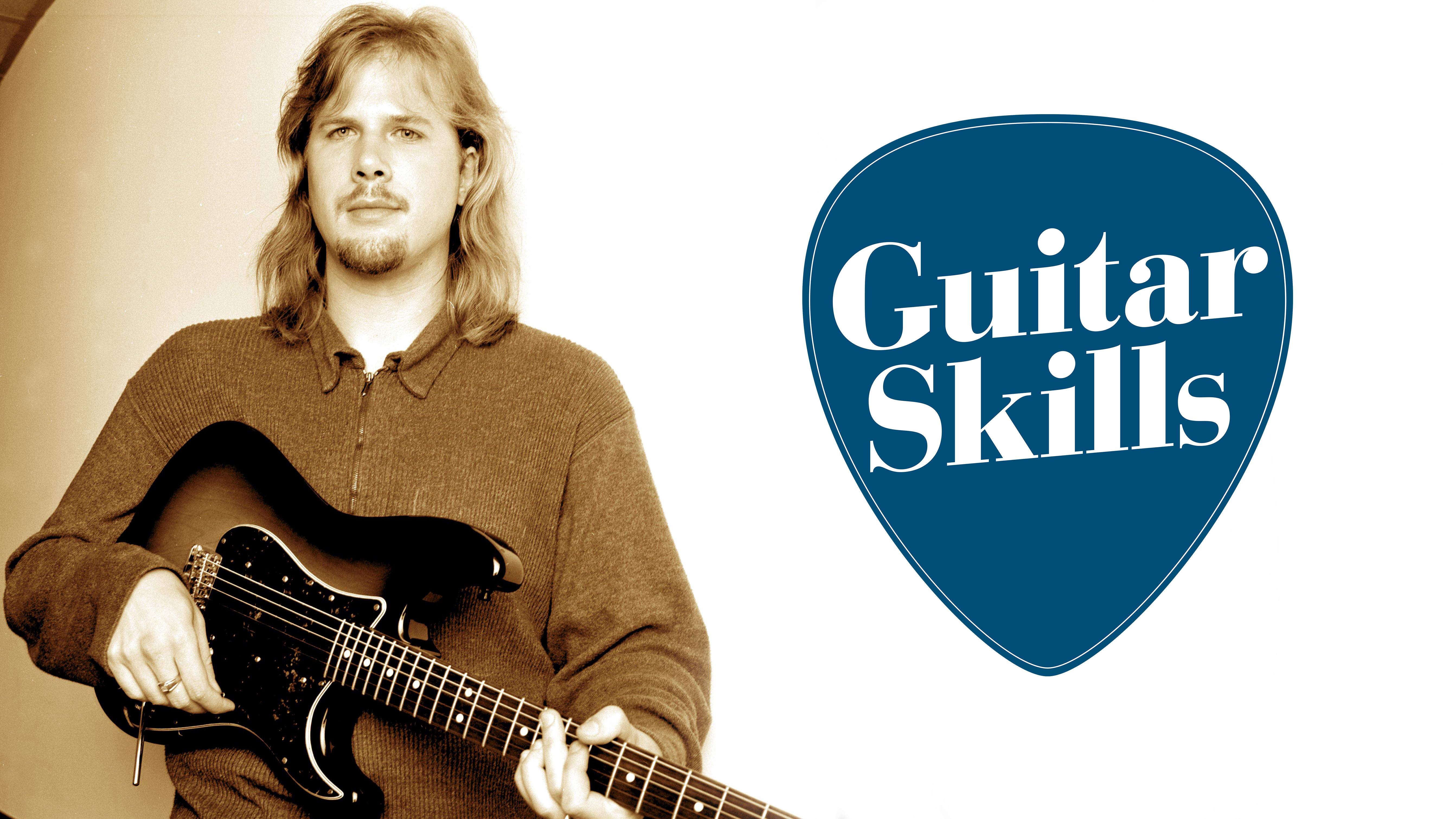
Guitar lessons: Born in 1966, Jeff Healey began playing the guitar at the extraordinarily young age of three, appearing on children’s television aged nine and playing in a covers band by 15. Having lost his sight as a child, Jeff developed his preferred method of playing the guitar flat on his lap, fretting from above. This enabled him to fret with both thumb and fingers, which would in turn offer him a near superhuman bending and vibrato technique – as well as numerous phrasing options that can’t really be played any other way.

Despite his unusual technique, Jeff ’s vocabulary was heavily influenced by classic blues players, such as Albert Collins, Eric Clapton and Stevie Ray Vaughan. Yet, as a passionate collector of jazz 78s (Jeff hosted his own radio show featuring these for many years) who played both trumpet and trombone, Jeff maintained that he didn’t think in terms of guitar when he was improvising.
Although his signature style is relatively tough to recreate, you can learn some of Jeff’s licks and tricks with this month’s lesson. Jeff played Stratocasters in the main (though not exclusively) so a single-coil equipped guitar is perfect for this workshop.
You will need to dial in a bright overdrive tone. Be prepared to lower the gain for rhythm parts, either by adjusting your amp or by turning your guitar’s volume down.
Click on top right of tab to enlarge view
1. Basic groove 1
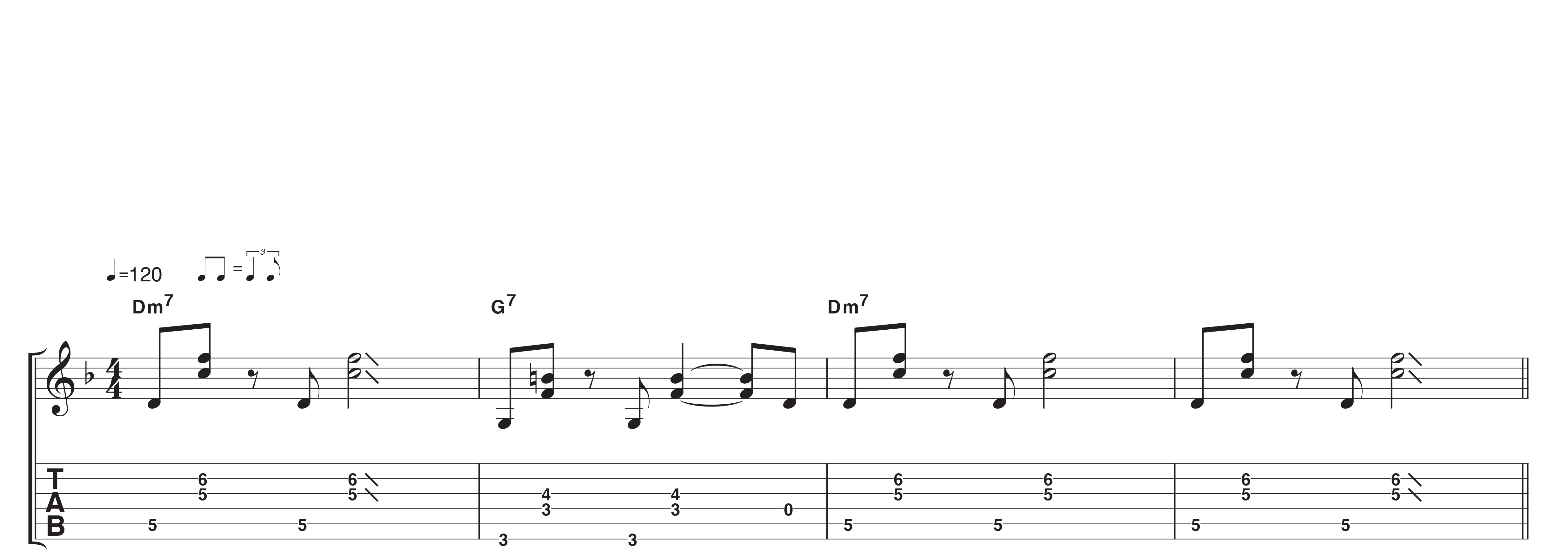
This rhythm part forms the backbone of this month’s jam track, using just one three-finger chord shape. As you’ll see, this takes the form of a single bass note and a two-note ‘diad’ giving the harmony on top. These are relatively easy shapes to fret but take care to keep the idle strings silent as you play.
2. Basic groove 2
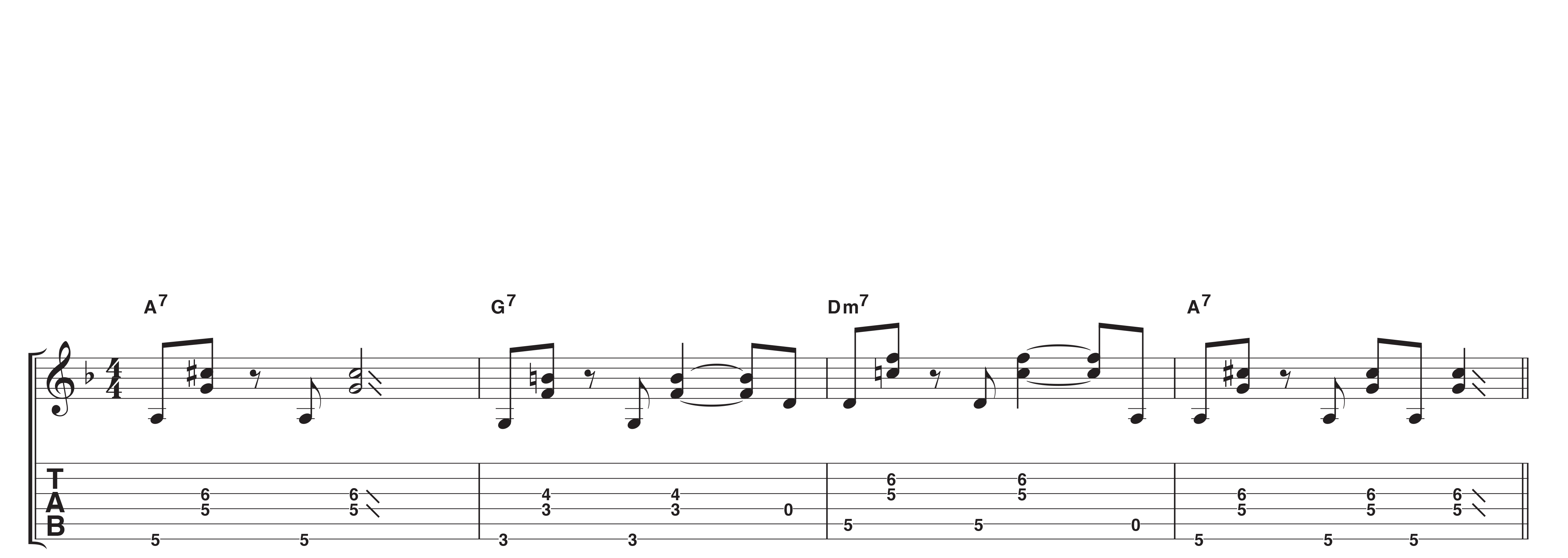
Although we’ve skipped the middle part of our 12-bar chord progression to save space for other ideas, you’ll notice that the pattern continues in a similar way, so it shouldn’t be too tricky to work out – you’ll just be jamming on the G7 and Dm7 chords. Notice how the final A7 ‘opens up’ rhythmically here for dynamic effect.
Get the MusicRadar Newsletter
Want all the hottest music and gear news, reviews, deals, features and more, direct to your inbox? Sign up here.
3. Pure pentatonic lick
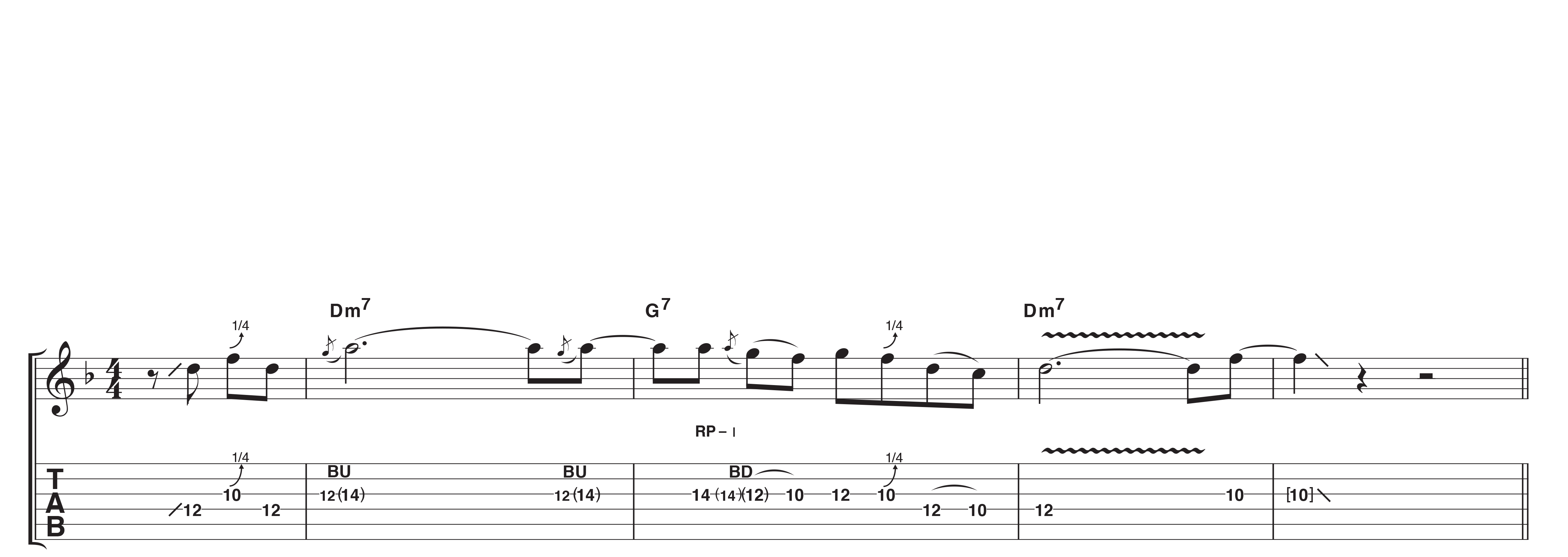
This D minor pentatonic phrase displays some essential ideas: the introductory phrase coming in before the music starts (a classic device known as an anacrusis), then the use of quarter-tone ‘blues’ bends on the minor 3rd F notes. The long bend in bar 2 is typical Healey – his technique gave him a lot of fretting strength and control on notes like this.
4. Pentatonics and doublestops
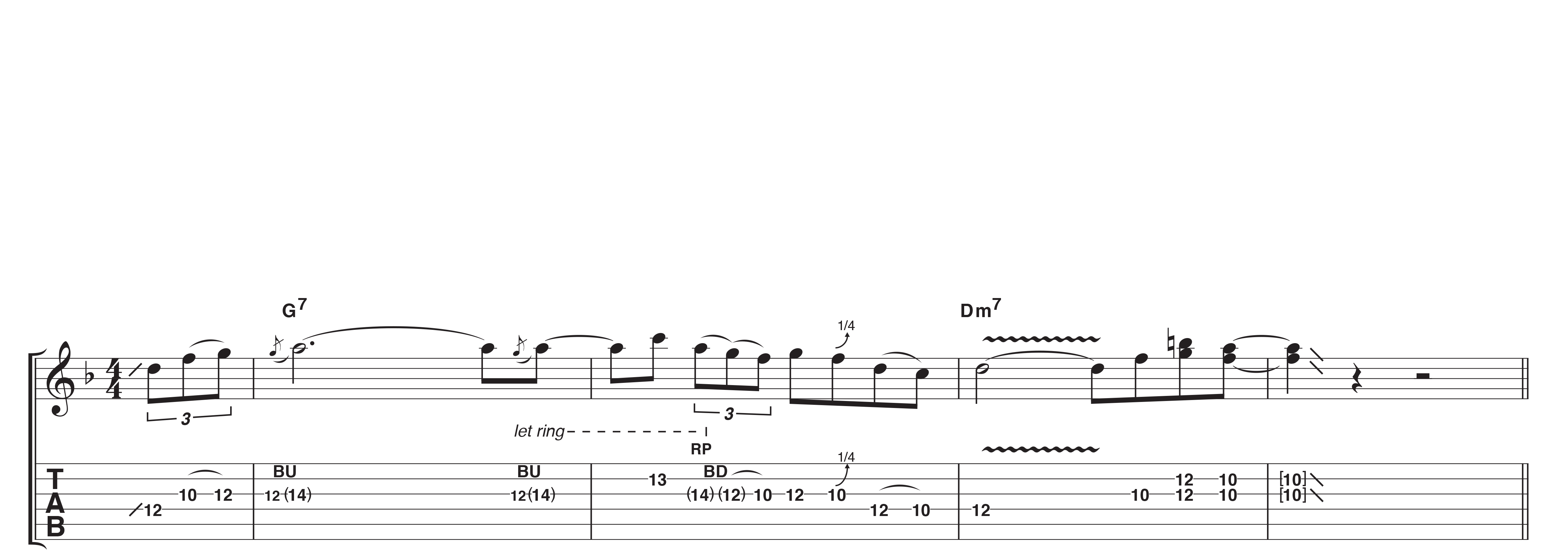
Similar to the previous example, this phrase takes things a little further. Using bends, hammer-ons and pull-offs in quick succession as happens in bar 2 is highly effective – Jeff’s fret-hand technique was more important to his style than his picking. Use the flat of your fretting hand fingertips for the doublestops in the final bar.
5. Playing the turnaround
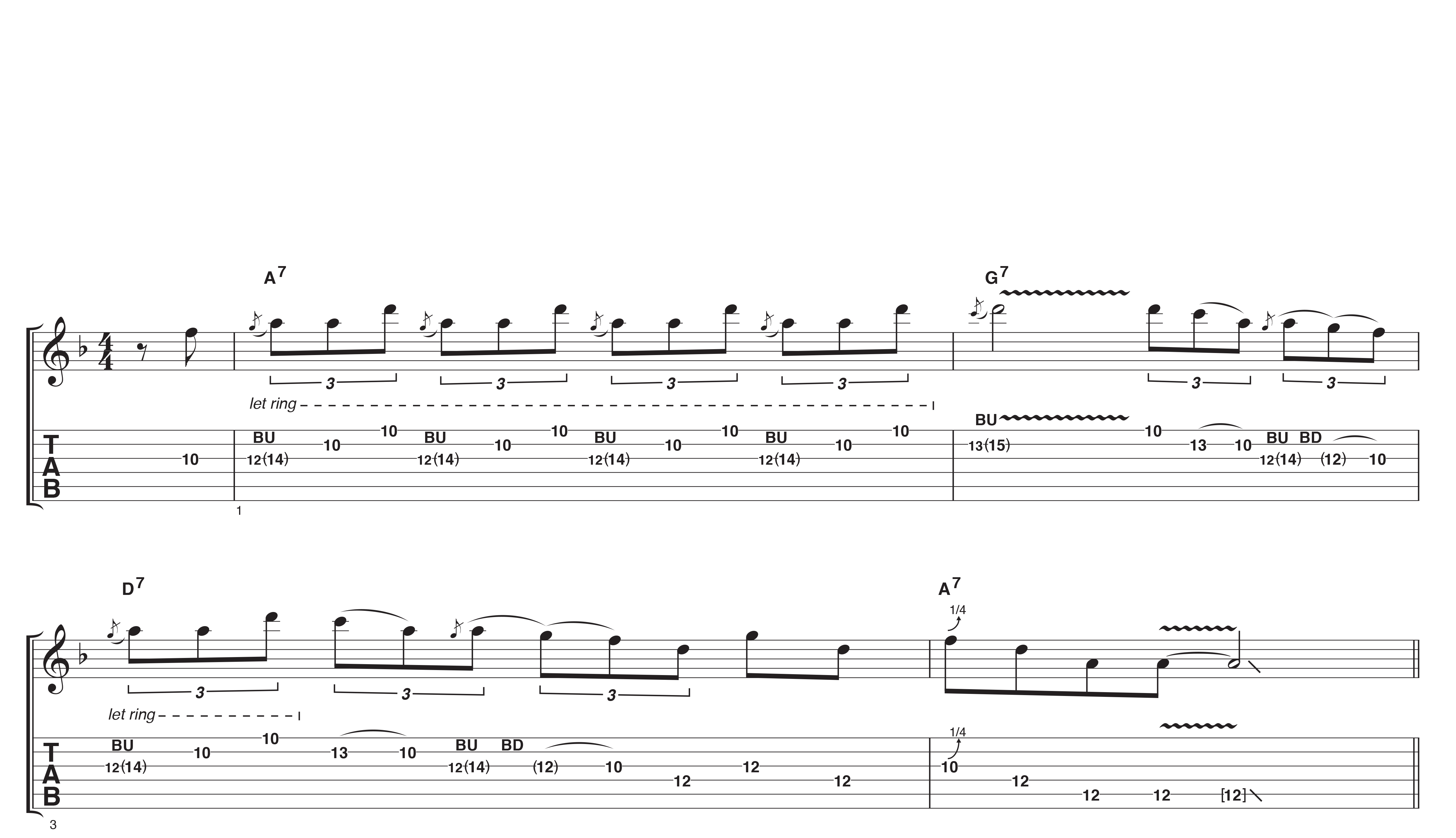
Pulling out all the stops to create excitement for the climax of a solo, this idea mixes string bends and static notes, which are left to ring. We retain features like the quarter-tone bends, slides, vibrato and triplets, so take your time and pay attention to all the small details and you’ll soon have this sounding great!
Backing tracks
More: The ultimate Jimi Hendrix lead guitar lesson
Total Guitar is Europe's best-selling guitar magazine.
Every month we feature interviews with the biggest names and hottest new acts in guitar land, plus Guest Lessons from the stars.
Finally, our Rocked & Rated section is the place to go for reviews, round-ups and help setting up your guitars and gear.
Subscribe: http://bit.ly/totalguitar










